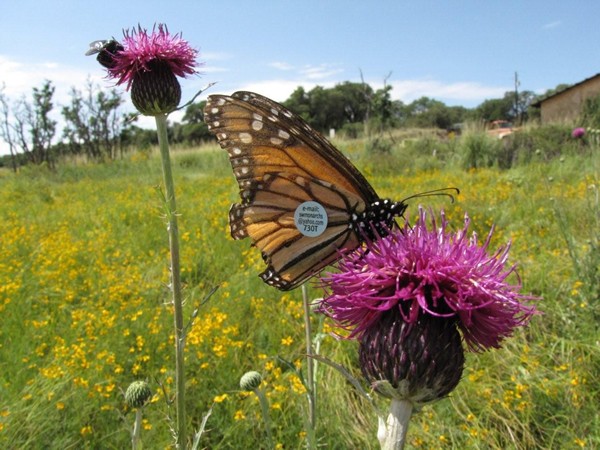Letter From Gail Morris: Western Monarch Fall 2022 Report #2
Monarchs are on their way!
Every Western State Posted New Sightings
Monarchs are on their way! Every Western state posted new sightings over past two weeks as they took to the skies taking advantage of good weather windows on their fall migration. View a selection of the observational reports submitted by volunteers in this Photo Gallery.
Tagged monarchs from Washington and Oregon were seen in California. Other monarchs tagged in Northern Utah were found over 100 miles due South from where they were tagged witnessing their progress as the season unfolds. Be sure to see the Adult Sightings map to see the wide range and abundance of sightings throughout the entire region. Thanks to everyone who helped make this possible!
The Southwest states were slammed with the remnants of Pacific tropical storms’ moisture and winds causing heavy rain and severe storms in pockets across the region for over five days. But skies finally cleared and more flight-friendly winds from the north and northeast unleashed the flood of monarchs held up by unfavorable flying conditions. New monarch sightings are appearing in higher numbers daily this weekend as the peak migration movement enters the greater Phoenix area with multiple reports each day.
Monarchs return to Lighthouse Field!
Diana Magor shares exciting news: “The monarchs are starting to arrive at Lighthouse Field in Santa Cruz! My friend and co-worker Dorothy observed 6 fly into the sanctuary on Thursday (Fall Equinox) at 4:30 pm and roost. (I had only found 1 at 9:32am going INTO the sanctuary.) Dorothy goes every day and reports back to me. She has eyes like a hawk, lives nearby, and is dedicated.”
But Diana still reports that larvae and pupae are still nearby. “I had a female nectaring and ovipositing in my garden yard and a male took down a different female to mate, but didn’t succeed. Everyone’s reporting seeing more monarchs here lately, and Scott from Corral de Tierra E of Monterey had a female lay 14 eggs, mostly on Irrigated Narrowleaf MW, on Aug 30, all of whom are surviving to 5th instars and will soon pupate.”
It’s an exciting time throughout California as monarchs are seen all life stages while adult monarchs are flying in from out of state as the season progresses.
Send in your reports!
If you are out this week and see monarchs of any life stage, be sure to report them to Journey North—whether they are adults or eggs or larvae. Provide as much information as you can such as weather conditions (it’s okay to estimate). Your detailed description of what you see can include, but is not limited to, the monarch’s gender and activity and, if known, the type of flowers if they are nectaring. If you can, observe the condition of the wings—fresh and new or worn and tattered or something in between. This helps us learn more about monarch age and survival. We realize it isn’t always possible, but please take a photo if you can. Thanks so much for your help! It was great to see reports from Nevada, frequent sightings in Utah and New Mexico and new sightings appearing over the weekend in Arizona. California lit up with many sightings in the north-central portion of the state as well as along the southern and central coastal areas.

